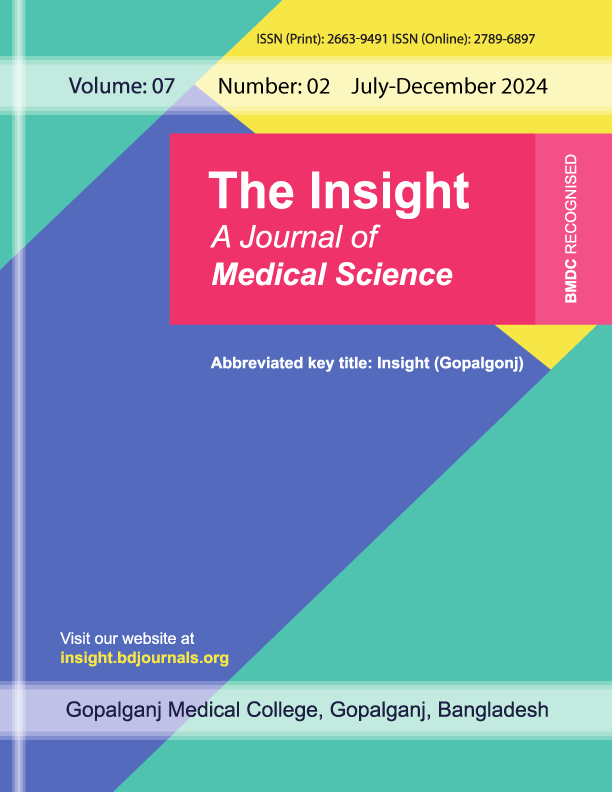Clinical Characteristics and Healing Outcomes of Diabetic Foot Ulcers in Hospitalized Patients - Insights from a Tertiary Center in Khulna, Bangladesh
Published 17-06-2025
Keywords
- Clinical Characteristics,
- Healing Outcomes,
- Diabetic Foot Ulcers
Copyright (c) 2025 The Insight

This work is licensed under a Creative Commons Attribution 4.0 International License.
How to Cite
Abstract
Background: The study aims to investigate the clinical characteristics, management approaches, and healing outcomes of hospitalized patients with DFUs at a tertiary center in Khulna, Bangladesh. Methods & Materials: This hospital-based retrospective study was conducted from January to December 2024 at two tertiary care hospitals (KMCH & GMCH) in Khulna, Bangladesh. Sixty adult diabetic patients with active foot ulcers were consecutively enrolled based on specific inclusion and exclusion criteria. Using structured tools, data were collected through interviews, clinical examinations, and medical record reviews. Variables included demographics, diabetes profile, ulcer characteristics, risk factors, management, and outcomes. Peripheral neuropathy and PAD were assessed using standard tools. Ulcers were graded using the Wagner system. Data were analyzed in SPSS v26.0 using descriptive statistics and Chi-square tests, with significance at p<0.05. Result: The study identified key demographic and clinical features among diabetic foot ulcer (DFU) patients aged 40–59, male, and from rural areas. Type 2 diabetes was dominant (93.33%), with poor glycemic control (HbA1c >9% in 55%) and common comorbid hypertension (73.33%). Most ulcers were single, deep, toe-located, with moderate to severe infection (58.33%) and frequent neuropathy (83.33%). PAD was present in 38.33% (mean ABI 0.78). Treatment involved debridement (80%) and offloading (60%), yet only 25% fully healed; complications included osteomyelitis (28.33%) and sepsis (16.67%). Better outcomes correlated with shorter diabetes duration, lower Wagner grade, absence of PAD, and improved glycemic control. Conclusion: Poor glycemic control, delayed presentation, neuropathy, and peripheral arterial disease significantly hinder diabetic foot ulcer healing. Only 25% achieved complete healing, while complications and amputations were common. Early intervention, absence of PAD, and metabolic optimisation were linked to better outcomes, highlighting the need for multidisciplinary, timely diabetic foot care.



